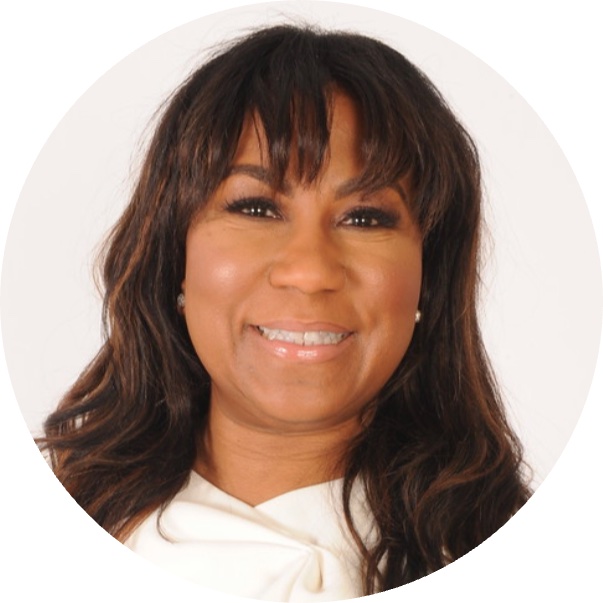
Move over Zoom fatigue: How RTO could lead to IRL exhaustion
Lauren Schneider didn’t know what IRL fatigue meant until this past April, when her company held its first offsite meeting since the start of the pandemic.
Being together for nearly a week with the rest of her colleagues from Compt, an employee benefits platform based in the Boston area, at first was thrilling for the senior PR manager. “We were able to interact in ways we can’t always do over Zoom or on Slack … and it made me feel so much closer to my colleagues,” she said.
But ultimately, four straight days of togetherness proved “exhausting,” she had to admit. “By the end of the week, I had that ‘need a vacation from my vacation’ feeling.”
With more workers returning to the office this month than at any time during the pandemic and with companies like Apple, Comcast and Goldman Sachs having mandated a post-Labor Day return, more of the workforce is poised to succumb to IRL fatigue, according to experts.
After more than two years of working from home, in-person interactions — encompassing everything from casual, water cooler chitchat to long meetings around a long conference table — could prove to be more taxing than people remember. While in-person engagement can be collaborative, it can also be anxiety-inducing for those who have forgotten what it’s like to be “always on” — and working around other people all day.
Even in a hybrid world, Dan Manian, CEO of Donut, a Slack extension used by 20,000 teams to foster employee connection and collaboration, believes IRL fatigue is a very real issue that must be a part of every business leader’s decision-making as the world returns to normalcy. “Plenty of people have found going back to the office exhausting on a sort of always on, emotional level — like, ‘Ooh, I got used, in my 10 minutes between meetings, to being able to kind of recharge in my personal space,’” he said.

“By the end of the week, I had that ‘need a vacation from my vacation’ feeling.”
Lauren Schneider, senior PR and communications manager, Compt.
IRL fatigue has affected even his own company, which remains fully remote. Donut hosts occasional offsites in various cities where employees have a chance to gather, catch up and work together for a week. “They’re awesome — it’s a chance to reconnect,” Manian said. But, he added, “by the end of the week, it’s usually like, ‘Hey, I’m ready to be in my office next week and really get some things done.”
Even as RTO is in full swing at many companies, bosses — at least the good ones — must continue to prioritize employees’ desire for flexibility in their work lives, as Manian sees it. “I think if you have a boss that listens and responds, [you can have] a frank conversation around what’s working and what’s not working” in regard to work arrangements, he said.
Many companies are confronting IRL fatigue head-on.
Take the New York and Los Angeles-based PR firm JBC, which has implemented mental health Fridays once a month to allow employees to focus on themselves rather than work. (In the summer, employees get every Friday off.) Mental health hours are also offered as a benefit employees can use for anything from meditation to working out to talking to counselor.
Pointing out the importance of both flexible work arrangements and IRL collaboration, JBC founder Jennifer Bett Meyer said, “We’ve been mindful to ease our team members back to in-person work by highlighting just how beneficial it can be for their short- and long-term goals, also incorporating a range of activities — including community service and all-staff workshops — to bring new excitement to the team.” The transition to IRL, even a gradual one, she noted, “can take a toll on anyone’s mental health.”
Kristyn Crowder, a licensed therapist in the Houston area, said she has worked with many clients struggling with RTO. She urges employees coping with IRL fatigue to use their Employee Assistance Program and work with a mental health professional who can help with the transition back to the workplace, in addition to practicing self-care to alleviate stress and talking with family about how the return to work might affect the dynamic at home.
Crowder also urges employees to be patient with themselves. “It’s like you are building your IRL muscle,” she said. “There is simultaneous discomfort and growth happening in this space.”
Insofar as best practices for employers, Arvind Jain, CEO and co-founder of the Palo Alto, California-based enterprise search and discovery company Glean, offers the following tips to fellow business leaders whose people may be dealing with IRL fatigue:
Give your employees the why
Communicate what’s behind the return to office. Eliminate the “Big Brother” feeling by being clear and intentional on your expectations of what in-office days mean and why they are valuable, he said.
Understand that hybrid work is still evolving
When Jain asked his employees to return to the office three days a week, Glean suddenly found all meetings were scheduled on those days to increase collaboration, but that also led to quick office burnout. The leadership team then reconsidered what they wanted in-person days to look like and restructured them accordingly.
Trust your employees — but allow them parameters to succeed
The key to managing a mix of in-office and remote work is to encourage employees to instill discipline into their workdays at home. By adding some of the rigors of IRL to WFH, according to Jain, “they will continue to be productive and satisfied with their career goals.”
Three questions with Sandra Altiné, Meta vp of Workforce Diversity and Inclusion

How will having a distributed workforce help move the needle when it comes to improving the diversity of an organization’s workforce?
Our goal is to hire and keep the best talent, no matter where they’re working from. We’ve shifted our approach to work to a distributed-first model, and now approximately 75% of teams at Meta are working across multiple locations. Since 2020, we’ve been able to hire individuals who are fully remote and working from locations where we don’t have offices, increasing the diversity of our candidate pool and workforce. Over the past year, candidates who accepted remote job offers were more often from underrepresented groups.
What can organizations do to help diverse candidates thrive once they get in the door?
Many corporate DEI initiatives focus on increasing the diversity of their teams without creating more inclusive work environments to sustain that diversity. We have made progress to ensure we are educating and giving managers and employees the tools to sustain and scale DEI efforts. We do this in a variety of ways. For example, we ensure new employees get training within their first 90 days to understand Meta’s DEI strategy and what’s expected. We also offer a Managing Inclusion course and a Be the Ally program that enables everyone to understand the importance of allyship. And we create an inclusive environment through employee resource groups, which ensure members of underrepresented communities have a voice, are heard and feel respected.
What have you learned from your own experience mentoring diverse leaders?
Since my mentors have provided me with such critical guidance, I’ve pursued my own relationships with mentees and strive to connect, learn from and mentor leaders. Millennials have their own ideas, and their own way of doing things and pushing the status quo. Being exposed to and learning from different generations helps inspire me to be a more inclusive leader. That’s why I recently started a series where I interview millennial leaders to help breakdown stereotypes, discuss their experiences, and highlight lessons learned and useful advice. — Jessica Davies.
By the numbers
- 43% of candidates have had their name mispronounced in a job interview, highlighting how many companies are failing to create a positive and inclusive interview experience.
[Source of data: Greenhouse report.] - 63% of European employees polled across 4,000 companies, said that they are less inclined to call in sick when working remotely or on a hybrid basis.
[Source of data: SD Worx.]
What else we’ve covered
- Employees posting on TikTok at work could be the best free marketing tool, but some companies want a more hands-on approach.
- Social comparison can motivate us to work harder, but the question is if that’s always a good thing. Introducing: career milestone FOMO.
- Since the pandemic struck, professional coaches and psychologists have observed a marked uptick in those seeking help for imposter syndrome.
- Sponsorship is a growing movement that formally connects people in positions of authority with high-potential employees a few rungs lower on the corporate ladder. Many are favoring it over mentorship when boosting DEI efforts.
- Employers are increasingly pulling out the stops to provide a wide range of mental health support that goes far beyond a wellness app subscription. But is it working?
- Tulsa, Oklahoma is giving remote workers $10,000 for them to move to their city, as long as they stay for at least a year.
- Employers are paying off their employee’s student loan debt and offering free higher education as a way to attract and retain talent.
- Office phone booths have been reimagined as Zoom rooms, web rooms, focus rooms and chat rooms.
